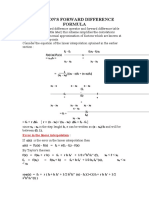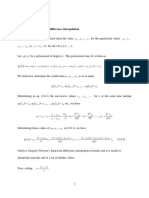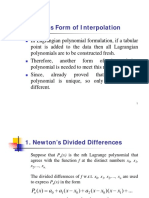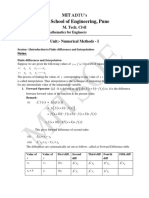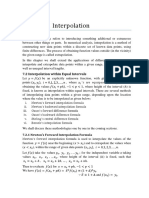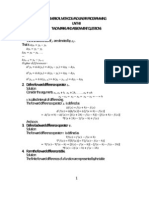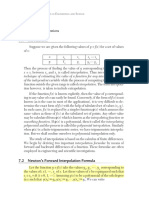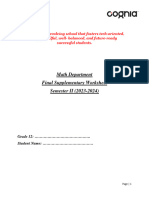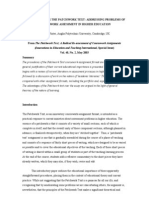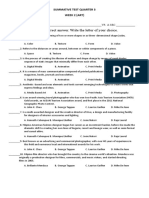0% found this document useful (0 votes)
81 views3 pagesLecture2 Interpolation
The document discusses the Newton-Gregory forward difference formula for estimating values of an unknown function f(x) at points between given data points. [1] The formula expresses f(xs) as a series involving forward differences of f(x0) weighted by binomial coefficients of s, where xs = x0 + sh and s is between 0 and 1. [2] An example uses the formula to estimate insurance premiums at age 46 based on premiums from ages 45 to 65. [3] The document notes that the formula is most accurate when s is close to 0, so the backward difference formula is preferable when s is close to 1.
Uploaded by
Ayush JaiswalCopyright
© © All Rights Reserved
We take content rights seriously. If you suspect this is your content, claim it here.
Available Formats
Download as PDF, TXT or read online on Scribd
0% found this document useful (0 votes)
81 views3 pagesLecture2 Interpolation
The document discusses the Newton-Gregory forward difference formula for estimating values of an unknown function f(x) at points between given data points. [1] The formula expresses f(xs) as a series involving forward differences of f(x0) weighted by binomial coefficients of s, where xs = x0 + sh and s is between 0 and 1. [2] An example uses the formula to estimate insurance premiums at age 46 based on premiums from ages 45 to 65. [3] The document notes that the formula is most accurate when s is close to 0, so the backward difference formula is preferable when s is close to 1.
Uploaded by
Ayush JaiswalCopyright
© © All Rights Reserved
We take content rights seriously. If you suspect this is your content, claim it here.
Available Formats
Download as PDF, TXT or read online on Scribd
/ 3




